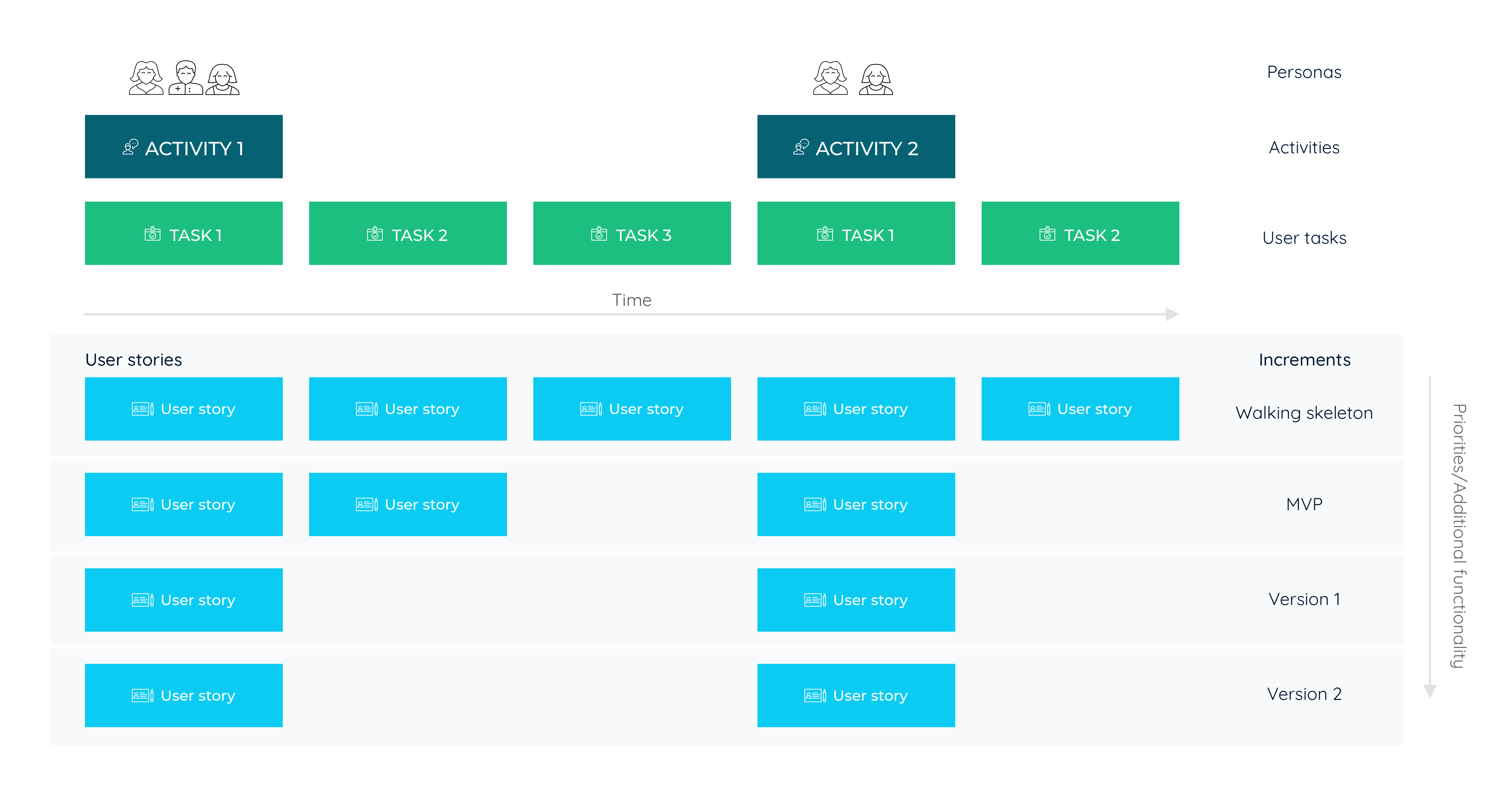
Agile development methods
- Name:Epics and user stories
- Purpose:Documenting requirements
- Used:Frequently
- Involved roles:UXD, PO, dev team, stakeholders
Documenting agile requirements
User stories are user centered requirements which are fundamental to agile development. They are written by business stakeholders, the product owner, user experience designers are members of the development team.
Depending on the agile method involved a user story should delivered an increment of a product or service which delivers real value for its users. The development team should be able to start and finish a story in one sprint (Scrum).
If a user story is too big to be finished in a sprint the development team split the story up into multiple stories. The original story becomes an epic, a container for multiple other stories.
Epics and initiatives
Epics can be bundled to an initiative or a theme. Tasks on the other hand can be used to split a user story into smaller pieces.
„Promise of a conversation“
The concept of user stories originate from extreme programming and were called „game pieces“ used in planning game. They used to be written on cards, therefore they needed to be short and precise and were thought of as artifacts which are used to initiate a conversation between developers, stakeholders and users to be further detailed in the conversation. I haven’t seen anybody using written cards any more. Nowadays Atlassian Jira is the defacto standard tool to capture and manage user stories.
The difference between a user story and a use case
User stories and the much older use case should not be confused or used interchangeably. Use cases describe interactions of users with a system usually software, but from the system perspective.
User does something the system has to react. Stories on the other hand show why the user uses the system, because they contain a benefit for the user. They should always be written out of the users perspective and be at least related or stem from user research.
Storymapping

Story maps help teams to get an overview of a desired experience by placing user story cards on a chronological map. You usually begin with chronological tasks centered around activities or user goals.